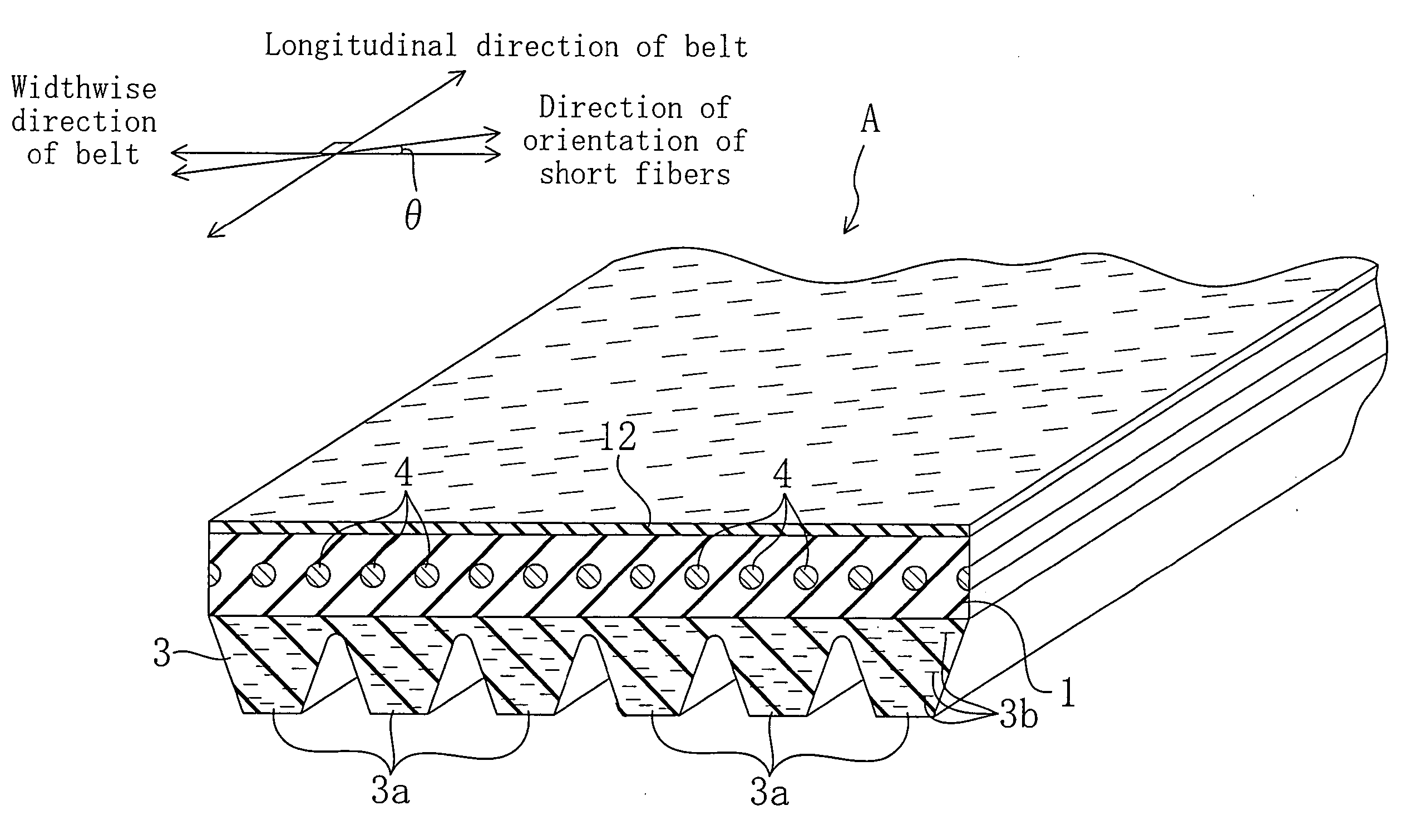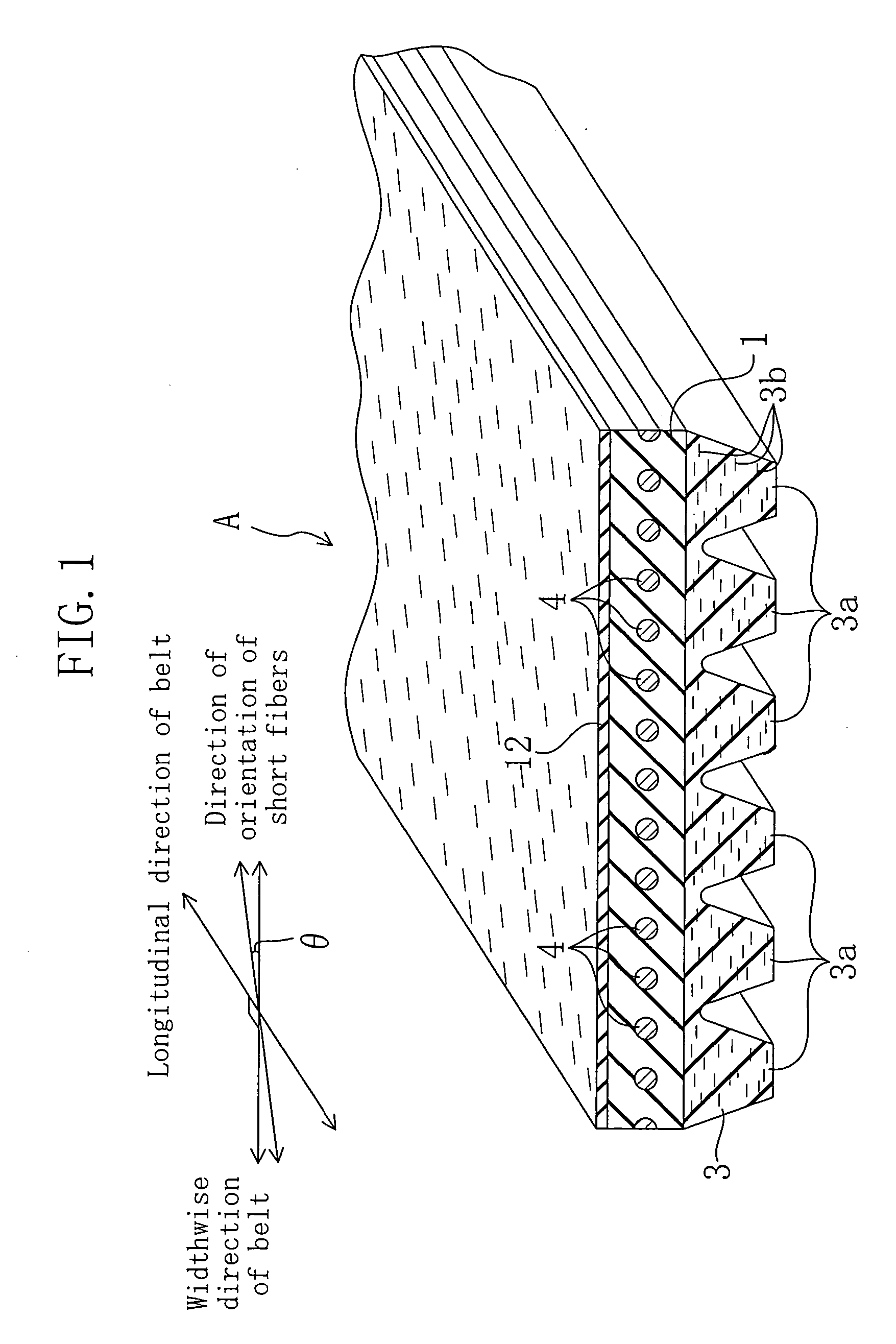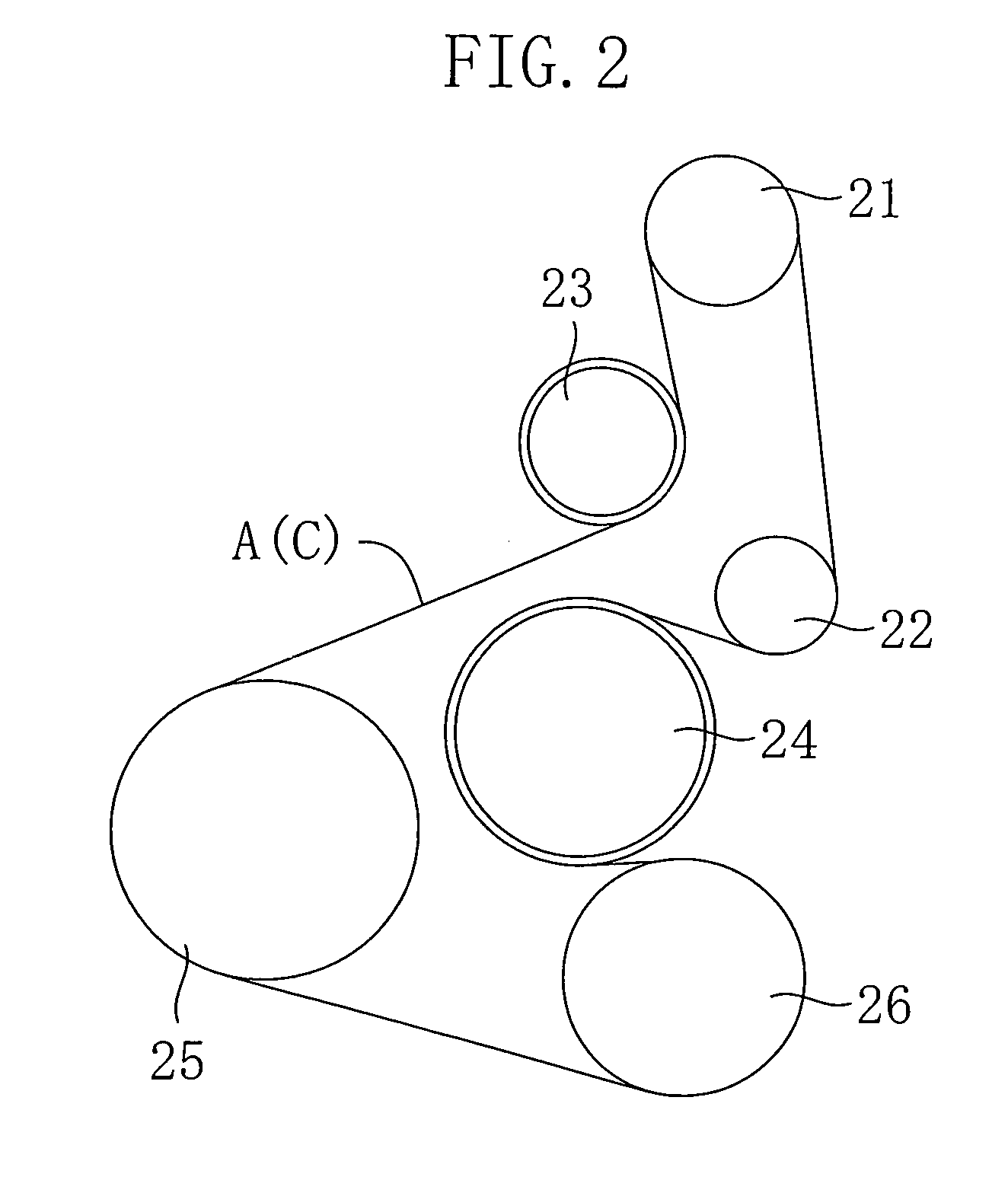Friction transmission belt
a transmission belt and friction technology, applied in the direction of driving belts, mechanical equipment, ropes and cables for vehicles/pulleys, etc., can solve the problems of noise generation, and achieve the effect of effectively suppressing belt deviation, and reducing the effect of correcting belt deviation
- Summary
- Abstract
- Description
- Claims
- Application Information
AI Technical Summary
Benefits of technology
Problems solved by technology
Method used
Image
Examples
example 1
[0048] A V-ribbed belt according to Example 1 is provided at its back face with a plain weave reinforcement fabric so that an angle é that the direction, in which the bisector of intersecting angles of warp and weft yarns orthogonal to each other is extended, forms with respect to the belt widthwise direction is 0°, i.e., so that the direction of the bisector of the intersecting angles corresponds to the belt widthwise direction. The V-ribbed belt according to Example 1 does not have a tendency to cause side tracking in the belt widthwise direction. It should be noted that the number of ribs is three, and the length of the belt is 900 mm.
example 2
[0049] A V-ribbed belt according to Example 2 is formed in the same way as in Example 1, except the belt back face is provided with a plain weave reinforcement fabric so that an angle é that the direction, in which the bisector of intersecting angles of warp and weft yarns orthogonal to each other is extended, forms with respect to the belt widthwise direction is −10°. The V-ribbed belt according to Example 2 has a tendency to cause side tracking in the direction of the bisector of the intersecting angles of the warp and weft yarns.
example 3
[0050] A V-ribbed belt according to Example 3 is provided at its back face with a short fiber-containing back face rubber layer so that an angle é that the direction of orientation of short fibers forms with respect to the belt widthwise direction is 0°, i.e., so that the direction of orientation of the short fibers corresponds to the belt widthwise direction. The V-ribbed belt according to Example 3 does not have a tendency to cause side tracking in the belt widthwise direction. It should be noted that the number of ribs is three, and the belt length is 900 mm.
PUM
| Property | Measurement | Unit |
|---|---|---|
| angle | aaaaa | aaaaa |
| angle | aaaaa | aaaaa |
| angle | aaaaa | aaaaa |
Abstract
Description
Claims
Application Information
 Login to View More
Login to View More - R&D
- Intellectual Property
- Life Sciences
- Materials
- Tech Scout
- Unparalleled Data Quality
- Higher Quality Content
- 60% Fewer Hallucinations
Browse by: Latest US Patents, China's latest patents, Technical Efficacy Thesaurus, Application Domain, Technology Topic, Popular Technical Reports.
© 2025 PatSnap. All rights reserved.Legal|Privacy policy|Modern Slavery Act Transparency Statement|Sitemap|About US| Contact US: help@patsnap.com



